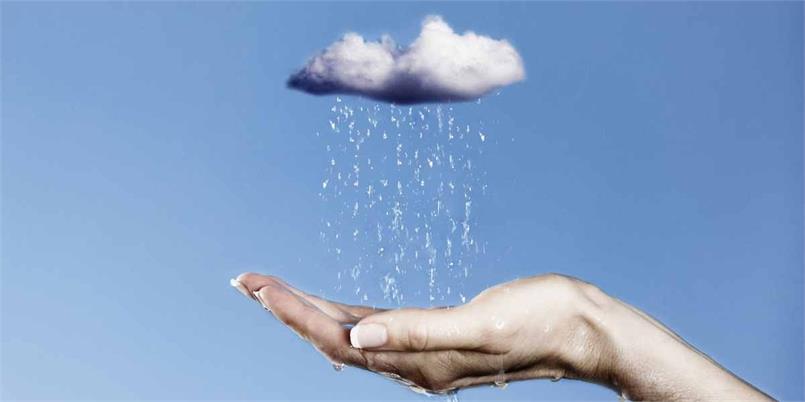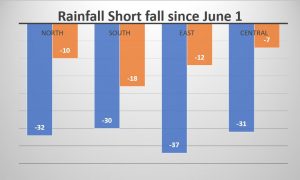

The southwest monsoon did arrive fashionably late but has performed in style. After keeping the country occupied with cloud watching for more than a month, decent rains have finally brought some respite to the country.
According to the Indian Meteorological Department, the month of August will see normal rainfall for the country.
The shortfall in monsoon rains since June 1 has shrunk from 35% at the end of June to 11% on Tuesday, July 29 thanks to heavy rainfall in the first 11 days of this month and again in the past week with a lean patch in between. But overall, rainfall has been about 3% above normal, well in excess of the initial forecast of being 5% lower than average.
So far, more than two-thirds of the country has received normal or excess rain, which is a big improvement from barely 23% of the country getting adequate rainfall in the beginning of July.


The relief is especially felt in the central and western states like Gujarat and Maharashtra. Reports say that the crop plantation levels are almost at the same levels as it were last year.
Rainfall has revived most significantly in Central India, a region defined by the IMD as the area between the country’s mid-latitudes to include Gujarat, Odisha and Maharashtra, apart from Madhya Pradesh. The region’s seasonal rainfall is just 7% below normal. The deficit is 10% in north and northwest India.
Crop planting in the beginning of the month was 26% lower than that a year ago, but the gap contracted to 6.4% last week.
Not Out of the Woods
With water-intensive crops like rice and wheat, India needs a better water storage and irrigation mechanism. Indian rice exports are likely to fall to their lowest levels in seven years due to weakening of demand from African countries as the incentives which supported the previous sales have been revoked. While the news is a cause of concern for exporters in India, there is a window of opportunity for policymakers.
Punjab makes a headway
To save large volumes of water that is consumed for growing cereals like wheat and paddy, Punjab’s Chief Minister Amarinder Singh asked the state planning board to plan a comprehensive crop diversification model.
Singh underlined the need to prioritise less water consuming crops, beginning with maize and cotton. He asked the board to come up with a strategy to persuade farmers to shift to these crops from the traditional wheat and paddy.
Kerala Floods, and Drought
Lessons from Kerala floods and then a subsequent drought brings the adoption of water conservation technologies to the fore. Water scarcity is a reality with which almost all states of India are familiar with. Last year, the country barely missed the drought line which means this year’s plentiful rain may not be there next year due to the El Nino effect.
If we plan to live without the danger of day zero staring at us, we would have to start putting in place ways to conserve surface and groundwater.
States need to be smart and put in place a contingency plan for sugar cane, wheat, rice and other water-intensive crops. Global trends, as well as the environmental burden to meet the supply, should be kept on the balance as in when the decision is made.
The government has already taken a decision in the right direction to create a buffer stock of 4 million tonnes of sugar on the back of bumper domestic production. Calibration in meeting the supply and demand as well as putting in place a robust cold storage chains all across the country can save crops, vegetables, and fruits from getting spoilt.
Such moves, like cold storage facilities within 5-10 km radius of major agricultural lands, can save fuel costs as well as cut food wastage by at least a half. In the process, it will save wastage of resources, manpower, labor, forex, carbon emissions, and precious water.
The first unit of the Compressed Biogas Plant built by Reliance at the Peddapuram Industrial…
As Karnataka gains momentum in the direction of ‘waste to energy,’ the Mysuru City Corporation…
DCM Shriram Limited has announced that it has successfully commissioned a new Compressed Biogas (CBG)…
TKIL Industries has partnered with global biogas conglomerate KIS Group to advance the production of…
1. What is Awite and what does it have to offer to the Indian biogas…
The Indian Federation of Green Energy (IFGE) and the Embassy of Nepal have jointly organized…